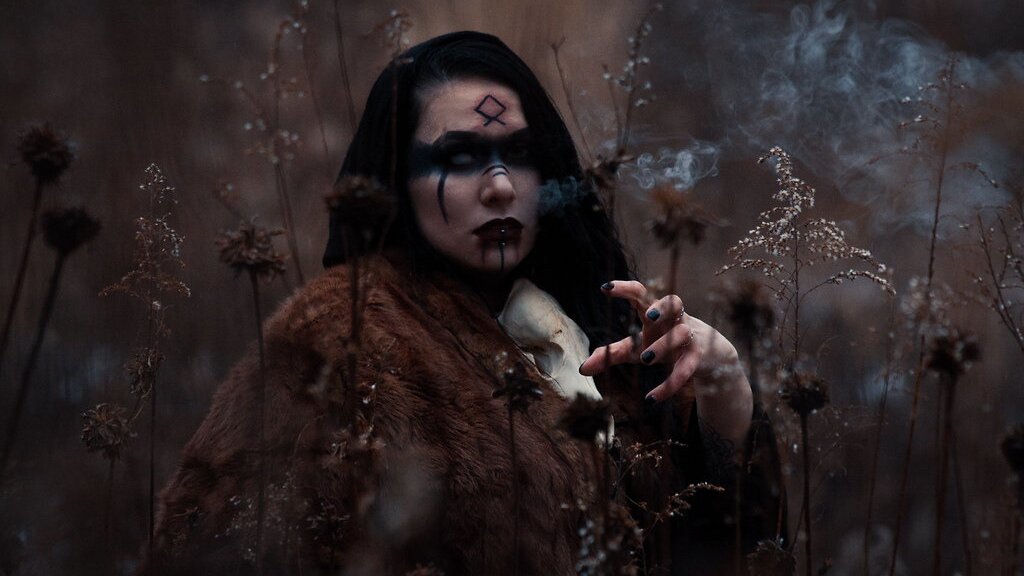Our knowledge of Asatro, the Norse Faith, is a fragmentary one at best. This is due to the fact that most of the records regarding the Norse faith were written during the christian era, under the Christian worldview and its “anti-pagan” opinions. Though intricately linked with the faith, the magic of the Vikings is, at most, a secondary field of interest, due to the christian prejudices of the ones who wrote about it. A view most undeserving considering that both Odin, The Lord of the Aesir and Freya, the Lady of the Vanir are Gods of magic.
One century to identify a Magic Rod
In 1894, a curved metal rod was discovered in a 9th-10th century female grave in Romsdal, Norway. Scholars have debated its intention for years, shuffling between theories that it was a "fishing hook or a spit for roasting meat", before realizing in 2013 that it was likely a form of a magic wand. The bend toward the top of the wand was seemingly made just before the wand was laid to rest with the woman, as if to stem its magical properties.
This particular wand fits the traditional mold of a seiðr wand based on previous discoveries dating from the 9th and 10th centuries. It is long (90 cm or 35.43 inches), made of iron (consistent with the materials circulating of the Norse Iron Age) with "knobs attached to them" for the benefit of the wielder.

The Viking metal rod that is believed to have been a magic wand.
Ritual Alterations
It is important to note that it was very common in Viking funerary traditions for weapons or items to be ceremoniously broken or bent before burial. Though the exact reasons for these actions are uncertain, it is believed by scholars such as Thomas DuBois and Neil Price that such alterations were part of the funeral itself. The weapons of a warrior, for instance, or the wand of a witch, in this case, were forcibly made impotent or non-functional just as the warrior could no longer fight, and the witch could no longer perform magic.

A Viking sword that had been ceremoniously bent
Magic in the Ancient Norse World
The wand is currently in residence at the British Museum in London, and the curator of its exhibit, Sue Branning, believes it was used as a magical rod in the seiðr rituals of the pre-Christian Nordic countries. Seiðr was one of the most common types of magic practiced during the viking era of the Norse world, and its presence has been heavily recorded in the Icelandic sagas. (Though again, one must remember that these sagas were written by Christians, not the practitioners themselves.)
Seiðr was not the only form of magic practiced in the Old Norse world, however, since the wand was discovered in the grave of a female, it was most likely used in such a performance. Although men had a more prominent role in the Viking world than women, seiðr was one ritual not often performed by males, but by wise women called Volvas.
According to the traditions dictated in the sagas, seiðr was used "to respond primarily to situations of crisis and was undertaken by a religious specialist (usually a woman) at the request of a client and within the context of a communal gathering. The ritual appeals to some sort of spirit helpers, either for divinatory information or help in controlling the mins and wills of others".
Magical Viking Women
This practice was most closely associated with the god Odin, in his guise as a war god, as well as Freya, the goddess of fertility. It should be noted here that this is not the first time that Odin and Freya are paired together; they also divide the souls of the warriors rescued by the Valkyries between their two realms.

‘Freja seeking her husband’ (1852) by Nils Blommér. (friendly reminder: Freya ’s husband is Odr; Frigg’s is Odin)
The finding of this Viking wand in 1894 and its subsequent interpretation by scholars does not necessarily add further insight to the field of Norse religion. However, what its finding does indicate, is that magic was likely a predominately female position, one considered important enough that the wand was worthy of being ritually destroyed before placed with its owner.
Join us next week, as we explore the secrets of the Viking witch: the Volva.












